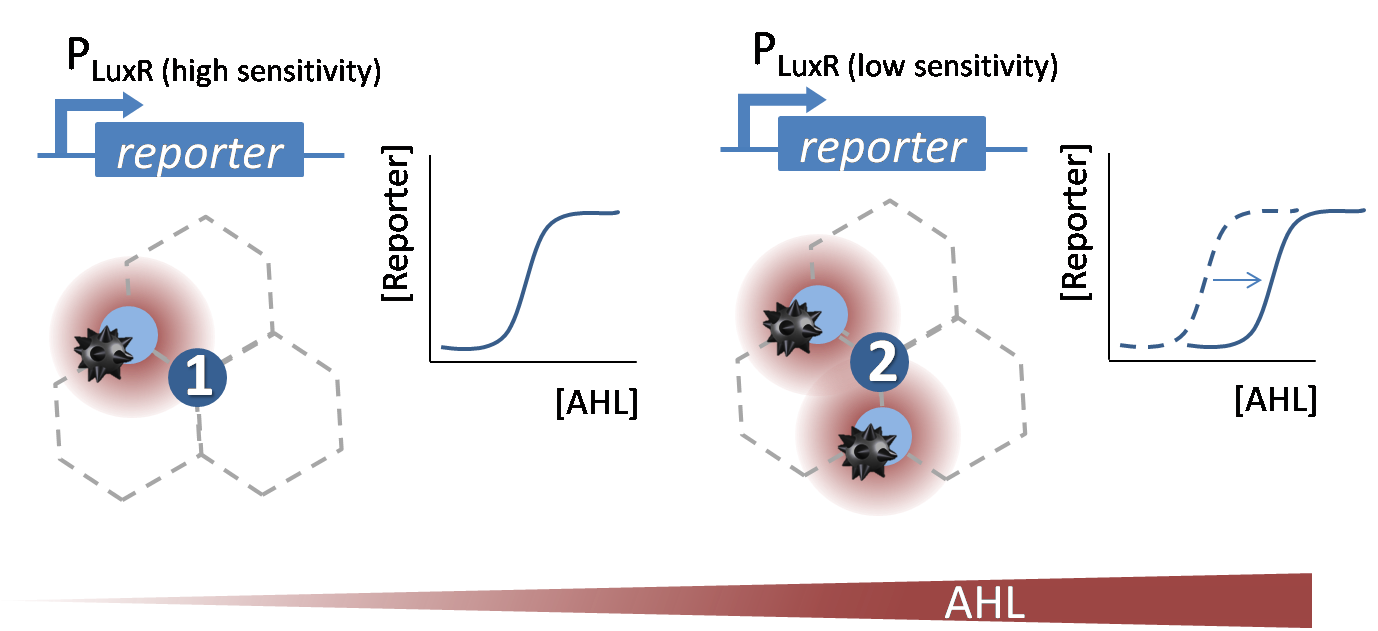Team:ETH Zurich/Processing 2
From 2013.igem.org
Creation of a promoter library
The wild-type PLuxR promoter ([http://parts.igem.org/Part:BBa_R0062 BBa_R0062]) gets activated in presence of AHL. In our project we need different sensitive promoters to distinguish between different levels of the AHL concentrations according to the different number of surrounding mines. Therefor we need to shift the dose-response curve of the initial [ http://parts.igem.org/Part:BBa_R0062 BBa_R0062] promoter. We decided to do site directed saturation mutagenesis (see below) to achieve a sensitivity shift. For more details please see the experimental results page for processing.
Site directed saturation mutagenesis PCR of the BBa_R0062 PluxR

We did site directed saturation mutagenesis of specific sites of the lux box according to the results taken from literature Antunes et. al., 2007. (see Figure 2).
 "
"






